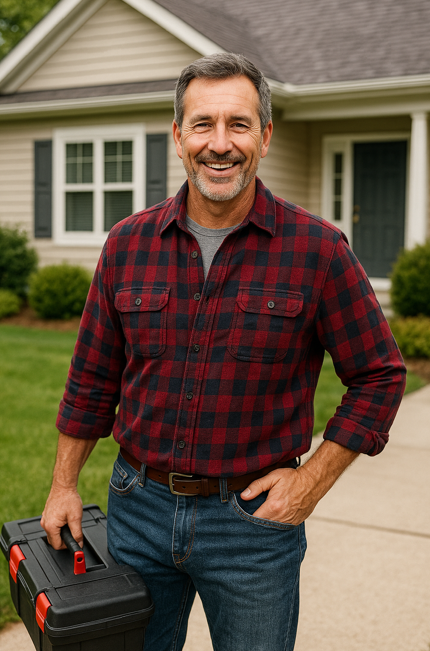Why Cold Climates Need Smarter Heat
Old-school heating systems — we’re talking 70% AFUE furnaces and baseboard electric — are total wallet-drainers in cold climates. And while heat pumps used to tap out below 30°F, new inverter-driven models with R‑32 refrigerant are rewriting the rulebook.
R‑32 is part of a new wave of low-global-warming-potential (GWP) refrigerants, and it happens to perform better than R‑410A in low temperatures. Add to that smarter defrost cycles and variable-speed compressors, and now we’re cooking with cold air. Or something like that.
What Makes R‑32 Heat Pumps Different
Let’s break it down:
-
Higher heat transfer efficiency – R‑32 is better at moving heat, even when outdoor temps drop below freezing.
-
Lower GWP (675 vs. 2088) – Helps meet 2025 refrigerant phase-downs without sacrificing performance [EPA SNAP R-32].
-
Lower charge amounts – Smaller environmental footprint, easier to install and maintain.
-
Less compressor strain – This refrigerant runs at lower discharge temps, which extends system life.
These performance perks make R‑32 heat pumps a solid match for cold climates, especially when paired with variable-speed tech and smart thermostats.
SEER2, HSPF2 & Efficiency in Low Temps
You’ll want to pay attention to SEER2 and HSPF2 ratings, especially for cold climate performance:
-
HSPF2 (Heating Seasonal Performance Factor) is your cold-weather MVP. Look for HSPF2 > 8.1 to qualify for ENERGY STAR Cold Climate Certified models.
-
SEER2 reflects cooling efficiency, which matters for year-round performance.
-
Look for inverter-driven systems rated to -5°F or lower (many R‑32 models now push -15°F!).
In layman's terms? A high-efficiency R‑32 heat pump can save up to 50% on heating costs vs. electric resistance or old propane systems, according to NREL.
Cold Weather Performance Tips 🧤
R‑32 systems are up to the challenge — but only if you install and run them right:
-
Correct sizing is crucial – Undersized systems will constantly run and wear out. Oversized ones short cycle and never dehumidify. Use a Manual J load calculator to get it right.
-
Pair with variable-speed air handlers – They adjust output based on load and humidity.
-
Ensure proper airflow – Clogged filters or duct leaks tank performance in the cold.
-
Don’t block the outdoor unit with snow – Give it 18" clearance in all directions.
Want to go pro-mode? Check out the Cold Climate Heat Pump Sizing & Selection Guide by NEEP (Northeast Energy Efficiency Partnerships).
Defrost Cycles, Sizing & Backup Heat
Every heat pump — even the most advanced R‑32 ones — needs a little love when it gets icy.
-
Defrost cycles: These systems temporarily reverse refrigerant flow to melt ice off the coils. R‑32 systems often do this smarter and faster.
-
Backup heat: Electric strips or dual-fuel setups keep the home toasty during arctic blasts. You can even pair an R‑32 heat pump with a high-efficiency furnace.
-
Zoning: Use smart zoning to direct heat where it’s needed most.
🎯 Pro Tip: Defrost cycles may trigger at 35°F or below. Set your smart thermostat to maintain a stable indoor temp and avoid short cycling.
Cold Climate Incentives & Rebates
Let’s talk 💰. The Inflation Reduction Act and state energy programs are pushing heat pump adoption hard. Here’s what you might qualify for:
-
Up to $2,000 federal tax credit for ENERGY STAR-certified heat pumps.
-
$8,000 in income-based rebates via the High-Efficiency Electric Home Rebate Program (HEEHRP).
-
State-specific rebates:
-
NYSERDA (NY): up to $10,000
-
Mass Save (MA): up to $16,000
-
Efficiency Vermont: $4,000+
-
PSE&G NJ: up to $15,000 installed
-
🌍 Many of these programs require R‑32 or low-GWP systems to qualify. Be sure to ask your contractor or HVAC supplier.
How R‑32 Lowers Operating Costs
You’ll notice a difference by the second utility bill. Here’s how R‑32 helps:
-
Higher efficiency means lower bills – Especially in shoulder seasons (fall/spring).
-
Reduced runtime – R‑32 pulls more BTUs with less effort.
-
Fewer maintenance headaches – Thanks to simpler component designs and better heat transfer properties.
-
Smart control integration – Pair with smart thermostats like ecobee or Nest to optimize schedules and humidity.
A study by the DOE's Building America Program shows that cold-climate heat pumps can outperform resistance heat by 2–3x efficiency, cutting heating costs by 30–60%.
Top R‑32 Systems for Cold Weather
Not sure where to start? Mike’s picks from The Furnace Outlet deliver serious cold-climate value:
-
Goodman R-32 3 Ton 15.2 SEER2 Heat Pump System – Reliable, efficient, and budget-friendly.
-
Bosch IDS Light R‑32 Inverter System – Whisper-quiet and rated down to -15°F.
-
Daikin Fit R‑32 Heat Pump System – Compact side-discharge design and ENERGY STAR certified.
-
MrCool Universal R‑32 System – Great DIY option with excellent cold-weather performance.
🏆 Look for units with 15.2+ SEER2 and 8.5+ HSPF2 to max out rebates and long-term savings.
Mike’s Take: Field-Tested Truth
"I’ve been in crawlspaces in January and on roofs in March. I’ve installed R‑410A, R‑22, propane, and every hybrid under the sun. R‑32 heat pumps? They’re the first time I’ve seen something that nails performance and efficiency when it’s freezing out. Less noise, better zoning, faster defrosts, and way lower electric bills. If you’ve got a good installer and follow sizing rules, it’s a no-brainer in 2025.”
Don’t buy into the old myth that heat pumps can’t hang in the cold. R‑32 systems aren’t just “good enough”—they’re better than most gas systems for efficiency, comfort, and rebates. And the tech only keeps getting smarter.
🧰Stay smart, stay comfortable, and I’ll catch you next time! - Mike🧰







